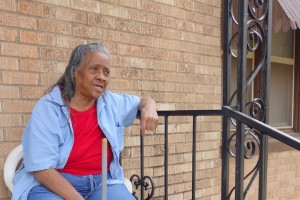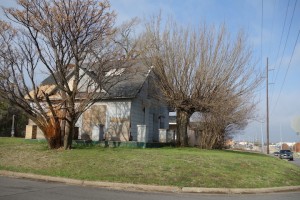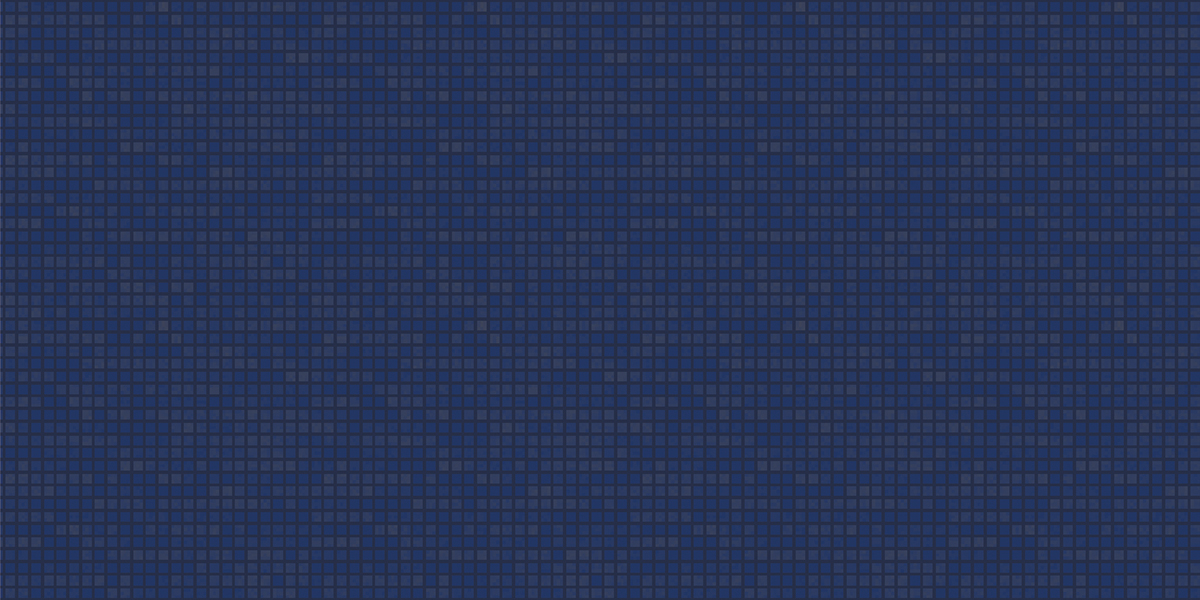University of Oklahoma is one of the 2014-15 winners of the Challenge Fund for Innovation in Journalism Education. See all 12 winners and the Honorable Mentions.
Team
- David Fritze, Executive Editor, Oklahoma Watch
- Nate Robson, Reporter, Oklahoma Watch
- David Craig, Associate Dean, Gaylord College of Journalism and Mass Communication, University of Oklahoma
- John Schmeltzer, Faculty, University of Oklahoma
- Kathy Johnson, Faculty, University of Oklahoma
- Julie Jones, Faculty, University of Oklahoma
- Melanie Wilderman, Faculty, University of Oklahoma
- Peter Gade, Faculty, University of Oklahoma
- Jeffrey Widener, GIS Librarian, University of Oklahoma
- Valerie Thompson, President, Urban League of Greater Oklahoma City
- Martin Bedoya, News Director, Accion Oklahoma – KTUZ/KUTU
- Lance Seeright, Principal, Santa Fe South High School
- Justin Hunt, Principal, Harding Charter Prep
- Kelli Taylor, Journalism Adviser, Harding Charter Prep
- Merri Lynn Walters, Journalism Adviser, Santa Fe South
Visit the Talk with Us project website here.
Describe your project as a tweet
Our @ONA grant proposal: conversation on poverty in Oklahoma City with mobile video, GIS #hackcurriculum
What is your live news experiment?
Use a combination of mobile video and GIS data to create a conversation about poverty in Oklahoma City between residents of low-income neighborhoods and area leaders. Responsive website would be developed to present comments of residents and leaders integrated with data about neighborhoods. Follow-up reporting would examine issues raised.
The project will foster awareness and discussion of poverty issues in Oklahoma City among stakeholders. Measurement will be multi-method, multiple stage: content analysis of previous issue coverage and of neighborhood interviews, network analysis to identify stakeholders after initial reporting, interviews with stakeholders, panel with stakeholders, follow-up interviews with team members.
How will this project reach enough people to make the experiment valid?
Oklahoma Watch, the primary media partner, has powerful reach in the state of Oklahoma. It will distribute coverage of the project to about 100 news outlets in the state, as well as to national news operations, and foster discussion through social media. It will engage further discussion by sponsoring at least one community forum.
New direct engagement will happen between the residents and leaders interviewed because leaders will be commenting in response to what the residents say. The website showing the comments of both will be promoted by university, media and community partners.
How is this project unique and innovative?
The project will use mobile video to bring views of low-income residents directly and vividly to legislators and other community leaders. Our intent is to provide a means of access that did not previously exist for these residents, as well as a feedback loop so they can see how, and how well, these leaders respond.
We plan to establish a process that can be duplicated by other media and nonprofit organizations that improves communication between government and institutional leaders and ordinary citizens. It will complement, in an integrated presentation format, the images and voices of individual residents with deep factual GIS data. The data will shape the topics residents are asked about in interviews, and provide context and objective information on the topics they raise themselves. This information will help to drive home the reality of the problems to the leaders as well as to everyone else who views the interviews and data. The GIS data will also inform details of follow-up stories on topics that emerge.

Zoe Wardsits in front of her Oklahoma City home. Ward says she does not believe lawmakers are doing enough to address issues important to her or her neighborhood.
The project also represents an unusual breadth and combination of partners: a nonprofit and a commercial ethnic media outlet, college and high school students, Urban League, and interdisciplinary expertise from social work and GIS to complement the perspectives of journalism faculty.
The public forum to engage the community will be planned based on network analysis that will identify stakeholders based on who has actually engaged on websites and social media, including thought leaders who might otherwise be missed.
How will you collaborate?
Oklahoma Watch, journalism faculty and students will identify at least two neighborhoods for the focus of the study.

An abandoned home sits just miles away from the State Capitol in Oklahoma City. Many residents said they feel lawmakers need to do more to address the needs of their low-income communities.
This choice will be made in consultation with the GIS librarian on poverty data and with community partners on issues of access to community members and to high school students who will assist with the project. Journalism students will work with high school students and with contacts through other community partners to meet and set up interviews with neighborhood residents.
Journalism students will shoot video with assistance from high school students. School of Social Work, Urban League and high school principals will facilitate contact with community leaders. Journalism students will do video interviews with community leaders, city officials and legislators from these districts. Students and journalism faculty will work together to edit video. Oklahoma Watch, faculty and students will plan a responsive website and contract with a developer to build it.
The university, media and community partners will promote and report on the site and the project. Oklahoma Watch will cooperate with community partners in organizing and promoting the public forum. In-depth follow-up coverage by Oklahoma Watch on topics that emerge will involve journalism students, faculty, GIS librarian and likely other partners.
What technology platforms will you use?
We will integrate geospatial visualization platforms, likely both ArcGIS Online and Google Maps. Using these platforms, we can map trends associated with the neighborhoods, and we can map information we glean from interviews, as we seek to understand common threads and foster discussion of these among stakeholders and in the public forum.
We will also integrate these maps and data into the project website. We will use publicly available tools such as Instagram and Animoto to collect short videos, though we also will shoot longer videos to edit. (Video will be shot on students’ smartphones and on iPad Minis.)
How will this project provide an educational experience for students above and beyond their current learning?
Our college does not offer in-depth experience with geospatial techniques applied to journalism. This project enables students to map, analyze, and visualize data and place characteristics of these areas, giving students the opportunity to see in depth what this kind of data can contribute.
Included will be 2010 Census data such as poverty rates, education levels and ethnic distribution as well as datasets on transportation and food access, school districting, and those providing future projections on people and places. The project will give students an opportunity for in-depth public affairs coverage that combines this kind of data analysis with use of mobile video in engagement with community residents.
We have mobile and public affairs reporting classes, but they do not do this kind of integration. Students will be exposed to a large-scale effort to draw attention to a community issue involving numerous partners and means of engagement.
In an update provided in November 2014, project leaders note that students are not only learning how to conduct a better interview (several students returned to campus after interviewing residents, didn’t like what they had after seeing other students’ projects, and returned to get more interviews on their own) but also how to interact with a variety of people and situations. It has pushed students out of their comfort zone and made them mature in their craft in a much faster way than they normally would just interviewing people on campus.
If this project works, how might the media organization and academic institution change its practices?
The project has the potential to broaden and deepen cooperation between Oklahoma Watch and the Gaylord College on in-depth journalistic projects because it will give Oklahoma Watch, students and faculty the experience of working together on a large scale project from planning through completion.
The project also has the potential to strengthen the community engagement and service of both organizations, placing them in a better position to do future projects focused on community needs. In addition, by building connections with GIS and social work, the project may enable integration of knowledge and practices from these fields into journalism curriculum.
Project update: What is the most important impact of your experiment?
The most important impact is the foundation that has been laid for future community-focused journalism partnership projects between Gaylord College and Oklahoma Watch. The project gave us tangible practice working as partners on a much broader scale than before – engaging multiple classes, Oklahoma Watch interns and staff, and college faculty – and showed us what works and how to make future projects work better. Additionally, the project pointed to specific issues we can focus on in more depth in the future in projects – for example, abandoned properties.

